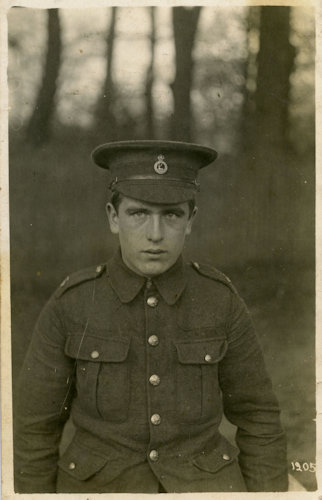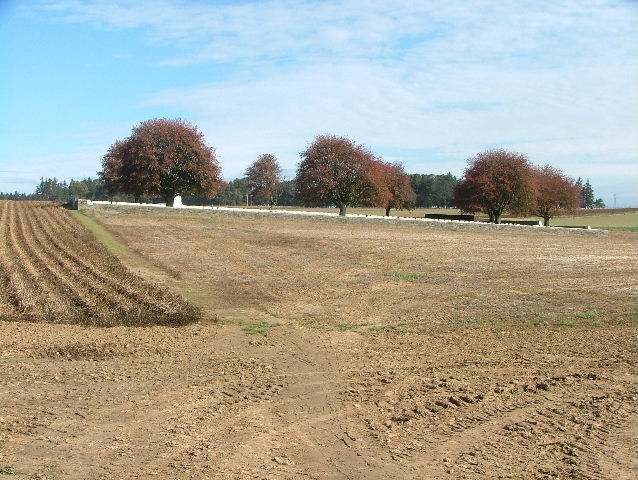Name
John Frederick Parsell
Conflict
First World War
Date of Death / Age
10/09/1916
18
Rank, Service Number & Service Details
Private
2366
Hertfordshire Regiment
1st Bn.
Awards: Service Medals/Honour Awards
Not Yet Researched
Cemetery/Memorial: Name/Reference/Country
KNIGHTSBRIDGE CEMETERY, MESNIL-MARTINSART
F. 28.
France
Headstone Inscription
Rest In Peace
UK & Other Memorials
Pirton Village War Memorial,
St Mary’s Shrine, Pirton,
Methodist Chapel Plaque, Pirton,
Pirton School Memorial,
Hitchin Town Memorial,
4 Co' Hertfordshire Reg' Territorials’ Memorial, Hitchin,
St Mary's Church Roll of Honour (Book), Hitchin,
Hertfordshire Regimental Memorial, All Saints Church, Hertford,
Not on the Holwell memorial
Biography
John was the son of John and Sarah Parsell. The first Pirton record for John (junior) was the 1901 census. That gives the birth places for John (senior) and Sarah as Wormley, Essex and Guilden Morden, Cambridgeshire respectively and Stotfold, Bedfordshire, for young John. He was just thirteen and so was born around 1898. It also lists Katherine Maude and his elder sister and she had been born in Stapleford, Herts. John (senior) was working as a shepherd. The same census confirms that they had three children, but that one had died. From this information it is possible to find the family in 1901, when they were living in Aston, Hertfordshire. John (senior) was now a cattle stockman on a local farm. This census reveals the third child, and their eldest son, William G. He was then eight and born in Bennington, Hertfordshire.
They had clearly moved around the area and as John (senior) worked on farms he moved to where the work was. They moved to Pirton some time after the 1901 census and certainly in time for John to attend the school as he is listed on their memorial.
Newspaper articles reveal that before the war John (junior) had begun working at Timothy White’s chemist shop in Hitchin, where his services were ‘highly appreciated’. In February 1914 he was one of the Pirton contingent who joined the Hertfordshire Territorials. In fact he was at camp with them when war was declared. At sixteen he was too young to serve and had to wait until July 1915 to go to France and even then would have been too young officially. The Parish Magazine records that he was one of the men who ‘had come forward to uphold the honour of our King and Country’ and was with the 1st Battalion of the Hertfordshire Regiment.
John wrote home from Hertford, presumably in late 1914. He was pleased that the Pirton soldiers were not forgotten: ‘I am very happy and comfortable and getting on well’ and he wished all a ‘Happy Christmas’.
If he joined up with the Battalion in July 1915 and was probably in the draft of seventy men plus one officer who arrived from England on the 14th. Two other Pirton men(*1), Arthur Walker and Harry Smith, were already serving with the 1st Hertfordshires, and had been since the November 1914; John would have known both.
At that time two of the Hertfordshire companies were in the front lines at Cuinchy and two held in reserve. The men were alternated every 48 hours, so John would have been in the frontline very soon after arriving. They were relieved on the 21st and marched to Montmorency barracks, near Bethune. The period to the end of August was spent in and out of the trenches, turn and turnabout with the Coldstream Guards.
John fought for a year with this pattern - in and out of the trenches, trench warfare and shelling. He would have been part of, or seen and heard much of, the following action, which is extracted from the Battalion’s War Diary.
On September 25th 1915 they were standing ready to supporting the 1st Kings who attacked the German trenches, but they were cut to pieces by machine gun fire and the Hertfords were ordered not to advance. On the 27th they launched a gas attack on the Germans, but it had little effect so they did not follow it up. In fact the diary suggests that it was a failure, with two officers and a number of other ranks wounded or gassed – presumably the wind changed. In December they suffered unusually heavy shelling, but were lucky enough to be in Bethune away from the Front for Christmas Day.
January 1916 saw 126 replacement drafts arrive, and for the period between January and September they spent most of their time in and out of the trenches around the Bethune area of France. Many of the names of where they were located are an important part of the World War One’s history and include Givenchy, Festubert, and Ancre. John did have some respite, however, because the North Hertfordshire Mail of February 17th 1916 reported that he had been home on leave and had ‘returned to the front last Saturday after several days’ leave’. He had brought with him some souvenirs of war; a German cap, a spent Allies hand grenade and a Jack Johnson - a 'Jack Johnson' was the British nickname used to describe the black German 15 cm artillery shell. It was named after the popular black American world heavyweight boxing champion. He returned fit and in good spirits.
In July, on the 12th Germans attacked with Minenwerfen fire(*2) during the day and then at night followed up with a raid. They were driven off with Lewis gun fire. A few days later the Hertfords returned the compliment and raided the German lines. They found the section they attacked to be empty, but were then bombed from the German support line. Three officers were wounded, along with 12 other ranks, 3 other men were killed and 1 listed as missing.
On September 3rd there was an attack on the German trenches north of Ancre, but it failed. The Hertfordshire trenches suffered badly from shelling and that night, despite the Germans using gas shells from 11:30pm to dawn, they worked to consolidate the line and improve its condition. For the 10th, when John was killed, the only entry records a draft of seventeen other ranks joining the Battalion.
In fact we know that John was not present during some of this because the newspaper reporting his death noted that he had only been back with the Battalion a few hours, having been in hospital ill. The report quotes from the letter from Ted Goldsmith to John’s mother that brought the sad news of his death. He had written at the request of Corporal Harry Smith, both Pirton men. Harry was too affected by the death to write himself. Ted wrote that just before his death, John had been ‘very cheerful having seen Fred Baines and Arthur Odell of the Royal Sussex and George Thompson of the ASC’ (Army Service Corps) another two Pirton men. It goes on to confirm that John was killed by a shell and that literally at the time of his death he had been with yet another two Pirton men, George Roberts and Arthur Walker. Both were wounded by the same shell. In fact Arthur’s wounds were so serious that he died later.
Ted wrote that he had been close by and ‘It may be small consolation to you to know that his death was practically instantaneous.’ Similar words were used often to save the relatives’ distress, but perhaps in this case, with an exploding shell being the cause of death, they may well have been true. Of the other Pirton men mentioned, Ted Goldsmith and George Roberts survived the war. Arthur Walker died of the wounds he received. Arthur Odell, Harry Smith and Fred Baines(*3) were killed later.
John’s was another death in the Battle of the Somme. He was buried in Knightsbridge Cemetery, named after one of the communication trenches. The cemetery is more remote than most; it stands quietly in the middle of fields 1 ½ miles north-east of Mesnil and is accessed by a 1 ½ mile farm track, the second half of which is a dirt track, unsuitable for cars and then 200 yards of a mud and grass path. Here there are 548 First World War burials, 141 of them unidentified men ‘Known Unto God’. John’s grave is marked with his name, rank and Regiment and a simple message from his family ‘Rest In Peace’.
He is also commemorated on the Hitchin Town War Memorial and the Hitchin Hertfordshire Territorials’ Memorial.
(*1) Both died and more complete details for the earlier period are provided under Arthur Walker.
(*2) Minenwerfen were trench mortars.
(*3) There were three Pirton men called Fred Baines who served, two of whom survived, another died and because of the Regiment mentioned it would be the man whom John had met earlier.
Additional Information
Text from the book: The Pride of Pirton
Acknowledgments
The Pride of Pirton book – www.pirton.org.uk/prideofpirton Chris Ryan / Tony French / Jonty Wild



